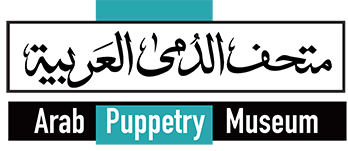
The same contribution margin manufacturing plant also produces 1000 units of another product, which we call product Y, using 500 labor hours. It means the total number of direct labor hours is taken as the denominator, which is divided by the numerator as the total overhead cost of the company. Take, for instance, a manufacturing company that produces gadgets; the production process of the gadgets would require raw material inputs and direct labor. These two factors would definitely make up part of the cost of producing each gadget. Nonetheless, ignoring overhead costs, like utilities, rent, and administrative expenses that indirectly contribute to the production process of these gadgets, would result in underestimating the cost of each gadget. Another tremendous advantage for companies using the predetermined overhead rate is it provides a more consistent analysis even during periods of season variability.

Formula
Therefore, they use labor hours for the apportionment of their manufacturing cost. Even for startups, having a basic understanding of your overhead costs is crucial. what is predetermined overhead rate You might start with a simplified approach – perhaps using a percentage of direct costs or a rough per-unit estimate.
B. Select Allocation Base
In other words, a company’s rent will not change if they produce 1000 units in a reporting period or if they don’t produce any units. Hence, preliminary, company A could be the winner of the auction even though the labor hour used by company B is less, and units produced more only because its overhead rate is more than that of company A. During that same month, the company logs 30,000 machine hours to produce their goods. Various tools help in calculating and applying predetermined overhead rates effectively. As a result, there is a high probability that the actual overheads incurred could turn out to be way different than the estimate.
Step 2: Pick Your Allocation Base
JKL allocates the manufacturing overhead based on the normal and expected number of production machine hours which are 20,000 for the new year. Therefore, the JKL’s predetermined manufacturing overhead rate for the new year will be $60 ($1,200,000/20,000) per production machine hour. Now management can estimate how much overhead will be required for upcoming work or even competitive bids. For instance, assume the company is bidding on a job that will most likely take $5,000 of labor costs. The management can estimate its overhead costs to be $7,500 and include them in the total bid price.
- Calculating overhead rates accurately is critical, yet often confusing, for businesses.
- In simple terms, it’s a kind of allocation rate that is used for estimated costs of manufacturing over a given period.
- For e-commerce operations, allocation bases might include the number of orders processed, website traffic costs, or even storage space used in a fulfilment centre.
- As your business grows and changes, you may need to adjust your rate accordingly.
If costs rise above predetermined limits, action can be taken to reduce expenses. Enforcing company-wide cost-saving policies around printing, travel, etc. further helps minimize overhead. The overhead will be allocated to the product units at the rate of 10.00 for each machine hour used. The calculation of the plantwide overhead rate first requires gathering the following information. Company X and Company Y are competing to acquire a massive order as that will make them much recognized in the market, and also, the project is lucrative for both of them. After going to its terms and conditions of the bidding, it stated the bid would be based on the overhead rate percentage.
C. Accurate Product Pricing
The example shown above is known as the single predetermined overhead rate or plant-wide overhead rate. Different businesses have different ways of costing; some would use the single rate, others the multiple rates, while the rest may make use of activity-based costing. A predetermined overhead rate (pohr) is use to calculate the amount of manufacturing overhead which is to be applied to the cost of a product. If you’re trying to make an estimate of manufacturing costs, you’re probably wondering how to determine predetermined overhead rate. Most businesses recalculate their rate annually as part of their budgeting process. However, if you experience significant changes in your operations or costs, you might want to recalculate mid-year.
Find the talent you need to grow your business

This depends on the size and complexity of your business, but a good rule of thumb is to strike a balance between accuracy and practicality. For most small to medium businesses, categorizing overhead into 5-10 major categories (rent, utilities, indirect labor, etc.) is sufficient. Larger operations might break this down further into categories for better tracking and control. Hence, you can apply this predetermined overhead rate of 66.47 to the pricing of the new product X. Therefore, this predetermined overhead rate of 250 is used in the pricing of the new product. Allocating overhead this way provides better visibility into how much overhead each department truly consumes.
- Overhead costs are expenses that are not directly tied to production such as the cost of the corporate office.
- The management can estimate its overhead costs to be $7,500 and include them in the total bid price.
- In this article, we will discuss the formula for predetermined overhead rate and how to calculate it.
- This is because using this rate allows them to avoid compiling actual overhead costs as part of their closing process.
If Department B has overhead costs of $30,000 but direct costs of $70,000, then its overhead rate is 43%. Despite having lower total overhead, Department B is less efficient since its overhead rate is higher. This rate would then charge $4 of overhead QuickBooks ProAdvisor to production for every direct labor hour worked. It allows overhead to be assigned to production based on activity (DLHs), providing insight into profitability across products. Accurately calculating overhead rates is important for determining the full cost of a product and appropriately pricing goods and services.
Machine Hours Example

Enhance your proficiency in Excel and automation tools to streamline financial planning processes. Learn through real-world case studies and gain insights into the role of FP&A in mergers, acquisitions, and investment strategies. Upon completion, earn a prestigious certificate to bolster your resume and career prospects. Using last year’s overhead rate without considering changes can lead to pricing mistakes.
- If the volume of goods produced varies from month to month, the actual rate varies from month to month, even though the total cost is constant from month to month.
- Larger operations might break this down further into categories for better tracking and control.
- In other words, using the POHR formula gives a clearer picture of the profitability of a business and allows businesses to make more informed decisions when pricing their products or services.
- Often, the actual overhead costs experienced in the coming period are higher or lower than those budgeted when the estimated overhead rate or rates were determined.
Advantages of predetermined overhead rate formula

For example, if you have both a cutting department with expensive machinery and a hand-finishing department that’s labor-intensive, you might use machine hours for the first and direct labor hours for the second. This $4 per hour overhead rate would then be applied to the number of direct labor hours for each job to allocate overhead costs. A predetermined overhead rate is an allocation rate that is used to apply the estimated cost of manufacturing overhead to cost objects for a specific reporting period. This rate is frequently used to assist in closing the books more quickly, since it avoids the compilation of actual manufacturing overhead costs as part of the period-end closing process.
